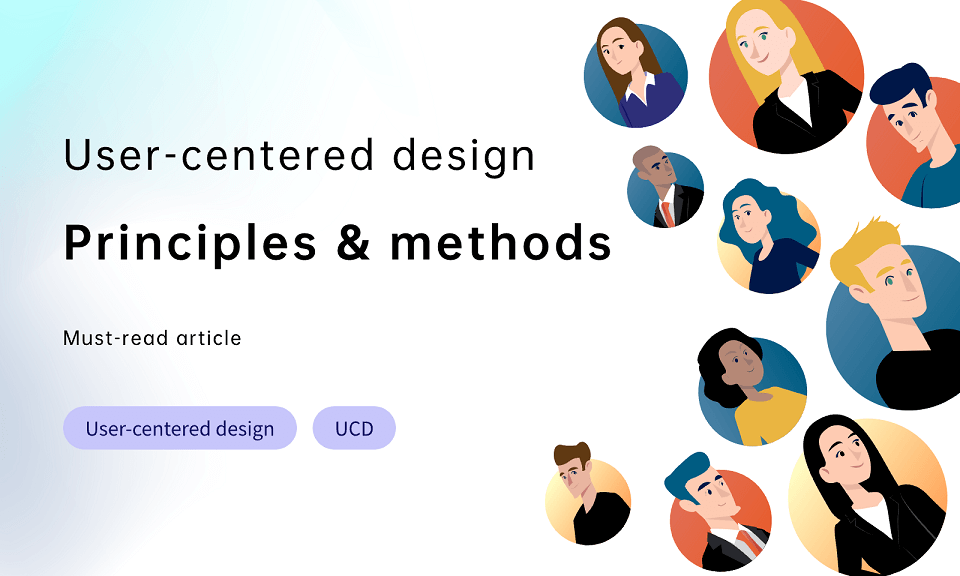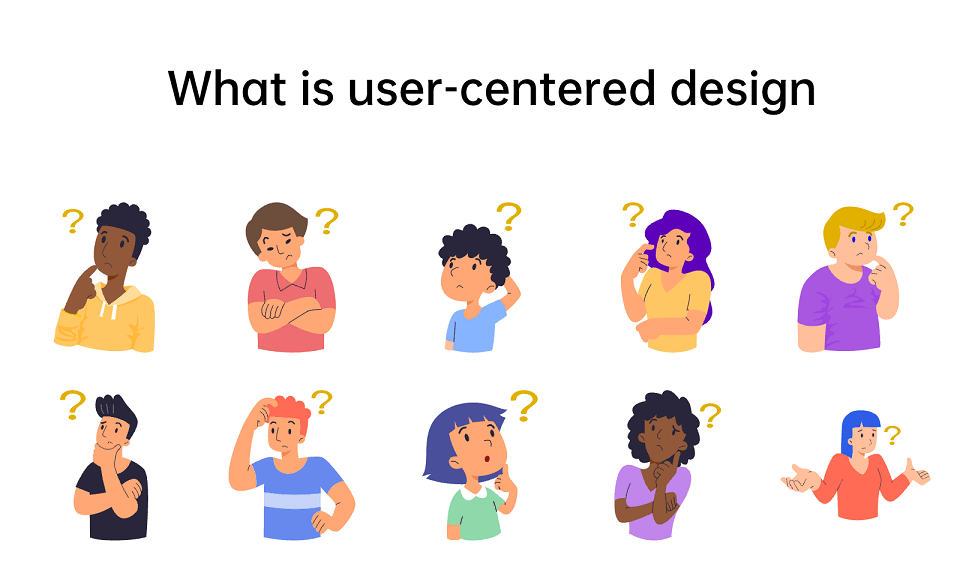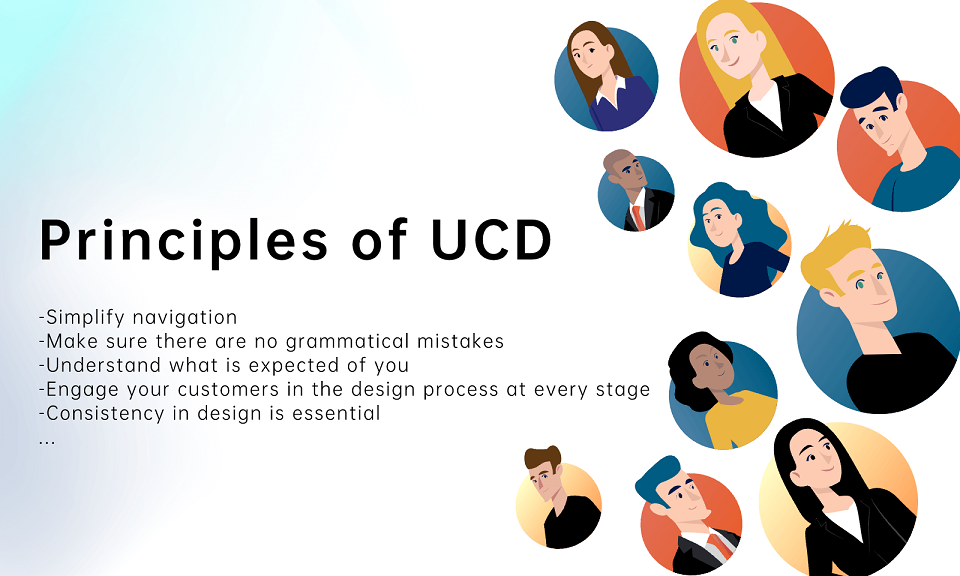Software and hardware tools are used to create systems to achieve corporate goals using advanced features and technical capabilities. However, most system design techniques do not include consumers, who are a vital component of the design process.
A system can be adapted to complement its intended users' current ideas, dispositions, and habits relating to the tasks the system is meant to execute. By using UCD in system design, a product that is more productive, enjoyable, and user-friendly for the consumer is produced, which promotes customer satisfaction and retention. But how can you pull this off? Read on to find out!
But how can you pull this off? Read on to find out!

Part 1. What is User-Centered Design?
User-centered design (UCD) is sometimes mistaken for UX, but it is an entirely separate technique. Instead of simply designing for consumers, the UCD approach focuses on designing with them.
Ultimately, the user-centered design aims to improve the product's usability through iterative design processes. Therefore, users' demands and product accessibility are at the forefront of the UX designers' minds throughout the project.
When developing a new product, designers work closely with consumers to ensure that the result is one they can be proud of. This involves considering the interests, needs, and views on the product of the end-user(s).
The result of user-centered design is a product that provides value to the consumer. For the best possible outcome, designers make continual product changes in response to customer feedback. Consequently, consumers may use the product for the rest of their lives.
It's important to this design approach that consumers don't have to change their habits or expectations to utilize the final product. Consequently, the product becomes a dependable tool for users because it provides an optimal user experience.

Part 2. The Principles of User-Centered Design (UCD)
The principles of user-centered design may be broken down into numerous categories. To ensure the best possible experience for your customers, follow these steps:
- Simplify navigation: Make sure your product's instructions are clear and straightforward. As a rule, you should provide navigational elements like scroll bars, page numbers, buttons, and the ability to save favorite pages if your product is digital.
- Make sure there are no grammatical mistakes: Test your product across the design phase to ensure that it fulfills the needs of the intended audience. Double-check all content and landing pages for spelling, punctuation, and grammar.
- Understand what is expected of you: Consider both the customer's needs and the tasks that the product or service is meant to accomplish before designing it.
- Engage your customers in the design process at every stage: Determine how the user will benefit from this feature before making any other decisions.
- Consistency in design is essential: Consistent and predictable design implies that people don't have to spend a lot of time learning how to utilize your product. So, if you modify your product's design, ensure they are similar to the original design.
- Communicate in plain terms: Don't overcomplicate product descriptions or guidelines with technical language. Instead, provide just the information the consumer needs to utilize the product in plain terms.
- Clarify the specifications: Ensure the product's specifications align with the customer's needs and preferences.
- Inquire about people's thoughts: Make design and specification improvements based on customer input. Collecting and analyzing input is an important part of the design process.
- The procedure can be repeated: Enhance the customer experience by using an iterative design methodology. You may make progressive tweaks and enhancements to the product as you gain a better understanding of your target market.

Part 3. What’s the Working Process of User-Centered Design?
The five stages of the UCD process are as follows:
1. Understanding the consumer and their predicaments
This is where designers analyze their target audience, the challenges they face, and the situational factors that inspire or encourage them to use your product. A product's designer is responsible for envisioning the user's first impressions and how they could react to the product.
2. Defining the needs of the user and the company
This stage defines why the design is of value to both the consumer and the company, as well as the issues it addresses. At this stage, designers and stakeholders are figuring out how to measure commercial success (i.e., projected revenue or ROI) and how to measure success for the consumer.
Having a proper grasp of UX strategy is crucial at this stage because it helps to bridge the gap between user demands and objectives as well as those of the company.
3. Development of innovative design concepts
The next step in the UCD process is to brainstorm solutions to the challenges that have already been identified. This is the main course of design. It includes activities such as storyboarding, journey mapping, wireframing, creating mockups and consumer flows, evaluating various UI components, and establishing a suitable information framework.
4. Real-world assessment of the product
Usability testing takes place after a product has been created to gather the opinions of actual users. Usability testing enables companies to discover issues consumers may encounter while using their products and improve the products before they are released to wider markets.
5. Observe the consumers and product
Whenever a product is introduced, it must be tracked to see if it has the intended effect. In addition to analyzing qualitative indicators, performance monitoring and customer feedback are required.
Observation is an effective method for gathering qualitative information about consumers. It's a means of conducting user research that involves monitoring and interviewing participants as they go about their daily lives. A contextual inquiry is conducted by observing how participants execute their duties and having them describe what they are doing when engaging with a product.
At this stage, typical questions to answer include: What went well? How did our clients react? How can we get better?
It is uncommon for a product's initial design to satisfy all set goals and specifications. In reality, it could take multiple rounds of the UCD process before designers produce a prototype that meets corporate and customer needs. UCD is, therefore, an evolving procedure.
Part 4. FAQs About User-Centered Design
Q1. What's the difference between user-centered and human-centered design?
Human-centered design is a design approach that's largely rooted in the broad natural qualities as well as psychological and perceptual attributes of humans. User-centered design is a more targeted and precise human-centered design that analyzes the target population in greater depth.
Q2. What is the difference between design thinking and user-centered design?
Design thinking is a technique of producing new products and providing solutions to societal issues that emphasizes creativity and innovation. User-centered design is an approach used to enhance an item or brand's usability and user experience.
Q3. How is UI UX related to user-centered design?
The user-centered design describes the method or technique used to create experiences, whereas UI/UX involves consumers' unique experiences when utilizing any product.
Part 5. Free Design Tool Recommendation: Pixso
Pixso simplifies the design workflow from production to R&D, encompassing the complete prototype, design, and delivery process. Multi-user collaboration, real-time data storage in the cloud, and robust drawing and annotation tools have earned it an outstanding design workplace. It is currently FREE to individuals and offers enterprises private deployment.

Conclusion
Very few companies, if any, can claim that their customers are irrelevant. However, even without any serious competition, inept solutions result in poor performance in other areas.
By prioritizing consumer demands, the user-centered design process helps to effectively reduce frustrations caused by a lack of vision. Better products, in the end, result in better use, which assists companies in reaching their goals.





